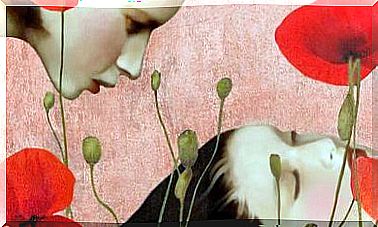Scents Of Youth: Doors To Our Emotional Past

Crayons, chocolate cake, freshly cut grass in the summer, our grandparents’ house and our mother’s perfume every time she hugged us. The smells of our childhood settle in our brains like doors left ajar, like powerful anchors that tie us to an emotional past.
Psychologists use the term “Fragrant Flashbacks” to refer to the intimate relationship between memory, smell, and our childhood. Until the age of five, the way a child integrates memories is closely related to smell, but as we grow up, sight and hearing become increasingly important.
Children have their own way of experiencing and understanding the world. We cannot replace this; children must collect their own ‘experience box’ full of positive reinforcement, affection and wonderful discoveries all by themselves.
The relationship between smell and childhood memories has not been thoroughly researched. However, scientists such as Dr Maria Larsson reveal that the nose is in fact the “physical entrance” to our emotional world.

Scents from youth: a direct link to our emotions
Helen Fields, a writer and medical expert for the Smithsonian, explains in her book Fragrant Flashbacks that during early childhood, smell and taste together are our main “chemical channels” for understanding the world. After the fifth year of life, the need to put things in our mouths decreases and the nose becomes less and less receptive after this age.
We may think that smell is a sense in which only sommeliers and perfumers have to be experts, but in fact it is the most powerful channel that connects to our brains. It is therefore able to activate emotions and very specific memories.

How scents activate emotions
When the molecules of the smell of a flower or wet earth, for example, bind to the inside of our nose, they send a signal directly to the
From here begins a fascinating journey that will carry the signal to two specific channels. First to the , so that the smell can be identified and classified. Later, this olfactory signal will travel to the amygdala, an area related to emotions, located below the hippocampus that is also responsible for our memories.









